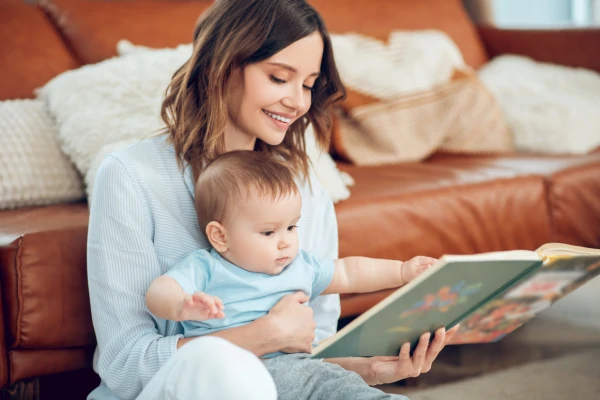As parents, we often underestimate the profound impact our everyday interactions can have on our children’s development, especially when it comes to literacy. The truth is, everything you do—from reading aloud to engaging in meaningful conversation—helps lay the foundation for strong literacy skills.
From the moment your toddler or preschooler starts babbling, they are absorbing language, picking up on sounds, rhythms, and patterns of speech. This is the time when their neural pathways are being formed, and every word, every conversation, plays a crucial role in strengthening their brain’s connections. Reading to your child regularly exposes them to new vocabulary, sentence structures, and concepts that will build their comprehension and communication skills over time.
Likewise, everyday conversations—whether you’re chatting about the weather, naming objects around the house, or asking them to explain their thoughts—are key to fostering their language development. These informal exchanges help your child understand how language works and how to express themselves clearly and confidently.
While these natural interactions are fundamental to early literacy development, a more targeted approach could be hugely beneficial. Finding the right resource to use at home and knowing where to start is the final step to giving your child a boost and setting them up for school success.

Work through the activities below, with your child, to find a starting point. Learn to Read with Cami’s learning experiences are sequential and follow a colour system. If your child is able to complete one of the activities, you’ll be able to practise this skill to consolidate their understanding or move on to the next skill set. If they’re unable to complete the activity, you’ll have a starting point for the skills you can teach.
Using the glossary may help with understanding the activities better. Cami’s Reading Adventure and associated card sets can be used to further develop these skills. Simply click on the ‘More Activities’ button next to the skill your child is working on for examples of how to use the card sets to develop each skill.
Word awareness is the ability to hear a phrase or sentence and understand that it’s made up of a series of words and words are made up of sounds.
Say this sentence after me:
‘Cami can kick’.
How many words can you hear?
Alliteration relates to the repetition of words with the same beginning sound in a phrase or sentence.
Say this sentence after me:
‘She could cook, count and climb’.
Which words start with ‘c’?
Additional activity: Ask your child to think of words that start with the same starting sound as another given word.
Rhyme awareness relates to the ability to identify and say words that rhyme. These words have a different beginning sound (onset) and the same ending sound (rime).
Say these words after me:
‘cat, bat, top’.
Can you tell me the words that rhyme?
Can you tell me a word that rhymes with ‘log’?
Syllable awareness relates to counting, tapping, mouthing (hand under chin to count chin drops), blending or segmenting words using syllables which will prepare a child for the skill of blending individual sounds into whole words.
Say ‘raindrops’.
Now can you break rain-drops into its parts?’
How many syllables in this word?
Segmenting is the ability to break sentences, phrases or words into smaller parts.
Blending is the ability to join speech sounds together to say words.
Segmenting example 1:
Say ‘Kip’.
Can you tell me the first sound in the word Kip? Do you know the end sound? What sound can you hear in the middle?
Segmenting example 2:
Listen to this word ‘cat’.
Can you tell me the sounds you hear?
Blending example:
Listen to these sounds, m-a-t.
Can you blend the sounds to say the word?
Phonemic awareness is the ability to hear, identify and substitute (swap, delete or add) the smallest units of sound in a spoken word.
Say ‘it’.
Now change the ‘i’ to an ‘a’.
What’s the new word?
Say ‘and’.
Now say ‘and’ without the ‘d’.
What’s the new word?
Say ‘and’.
Now say ‘and’ with a ‘s’ at the beginning.
What’s the new word?
Letter-sound correspondence is the ability to connect the symbols we see in writing with the sounds we hear when speaking.
Decoding is the process of translating written words into spoken words. Alphabetic knowledge is required to decode words.
Activity 1: Using alphabet cards, ask your child to find the letter that represents the sound you say or say the sound represented by a letter you give them.
Activity 2: Place two letters side by side. Ask your child to say the sounds and blend them together. If successful, try three letters (cvc word) or four (CVCC or CCVC).